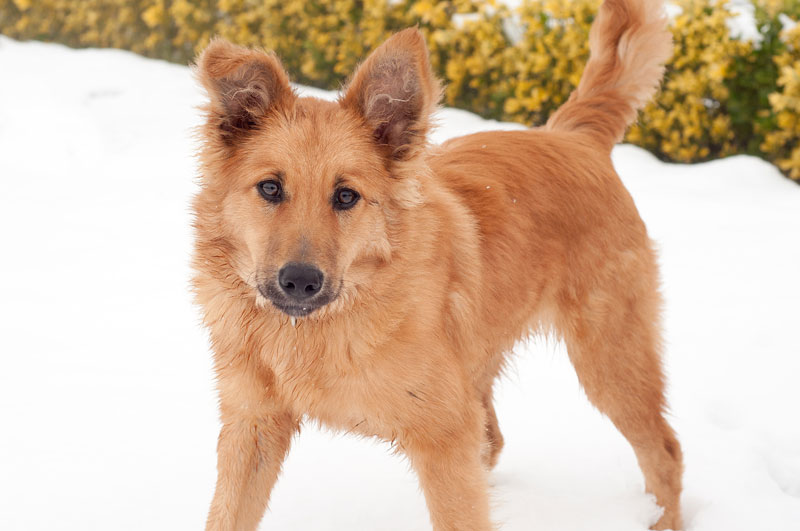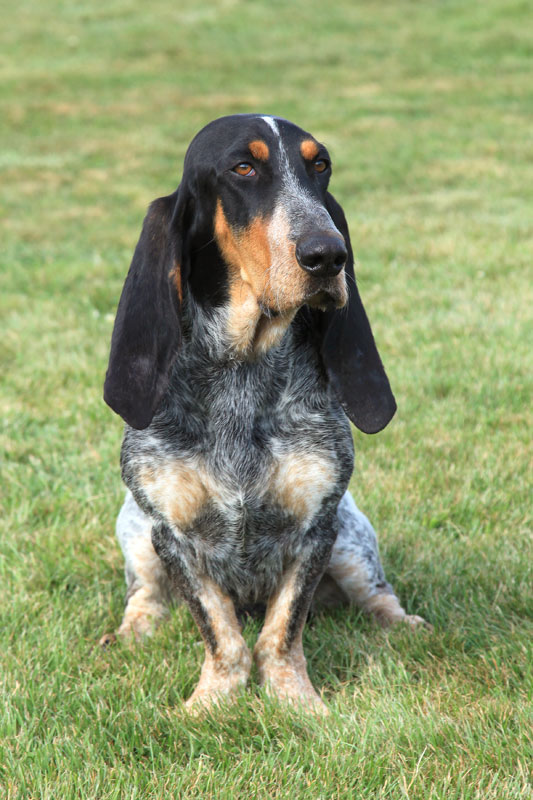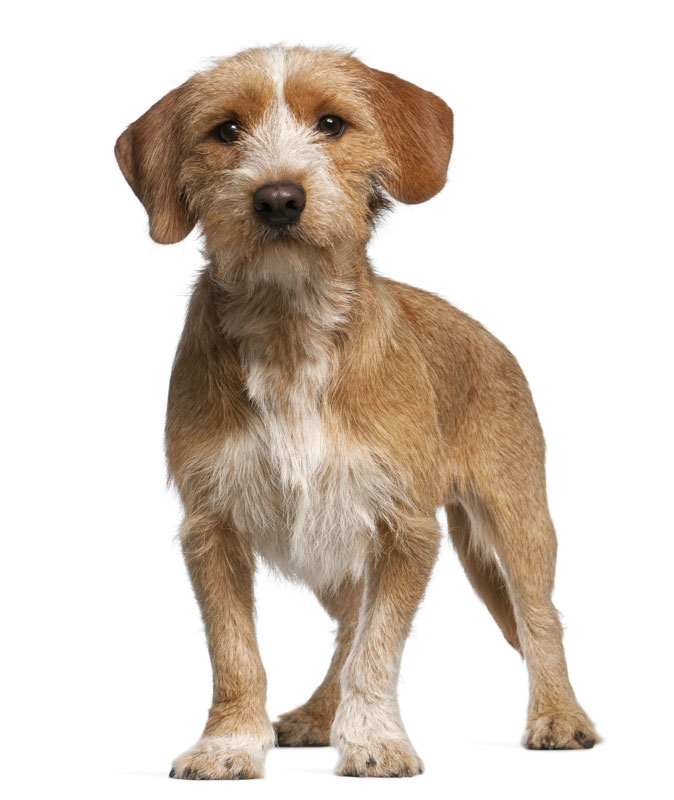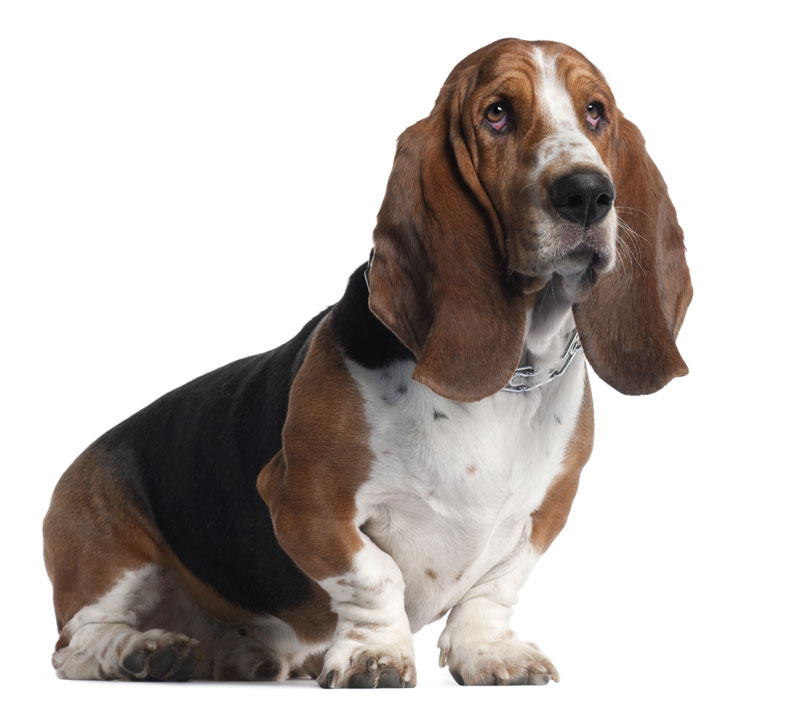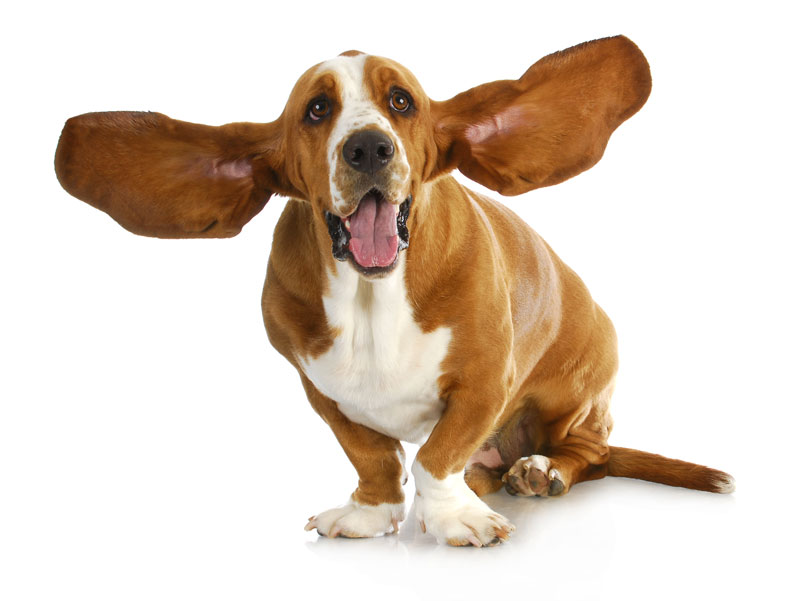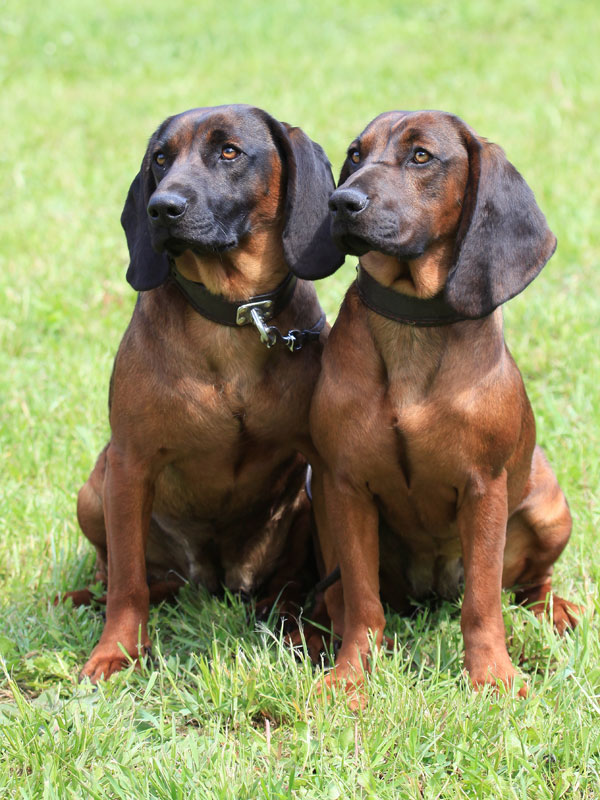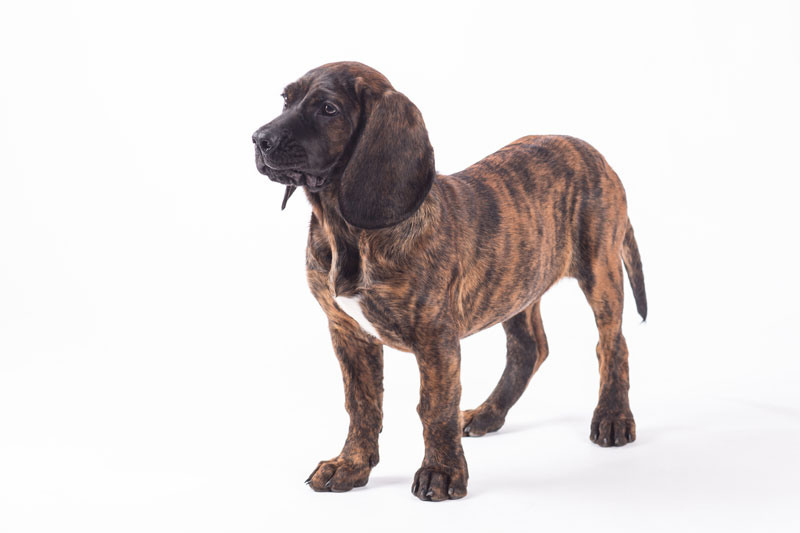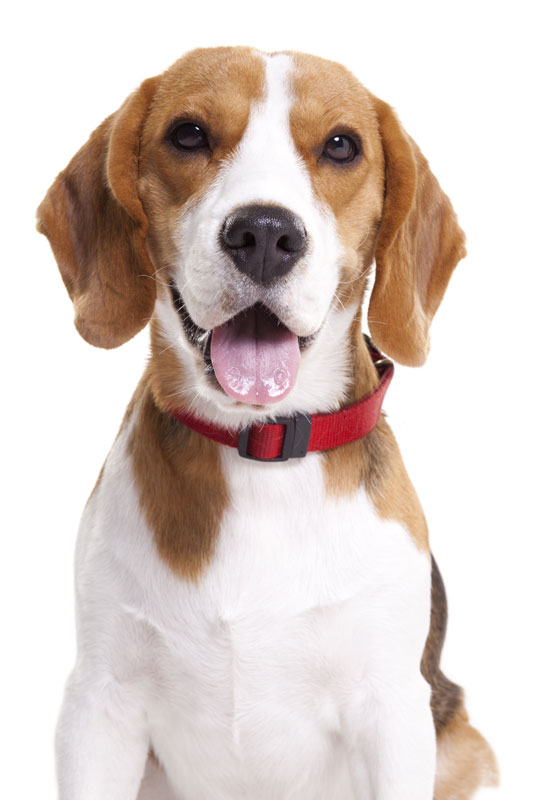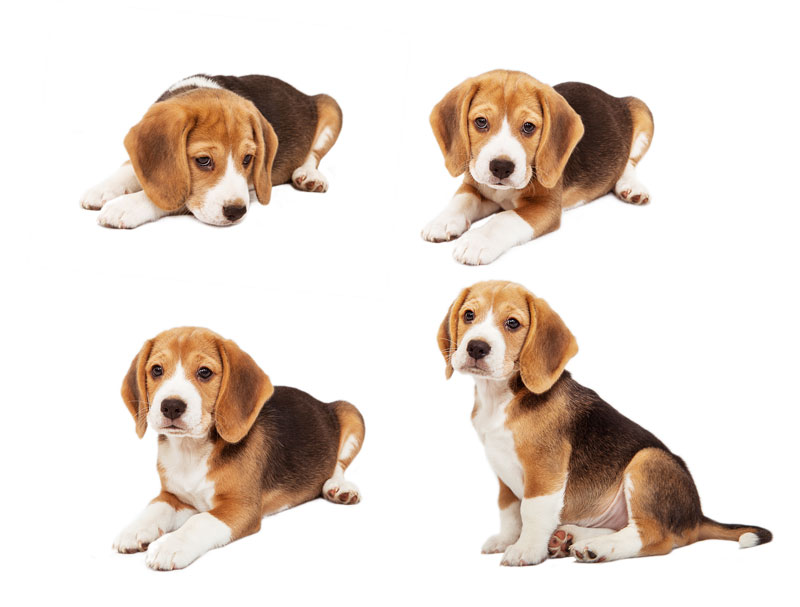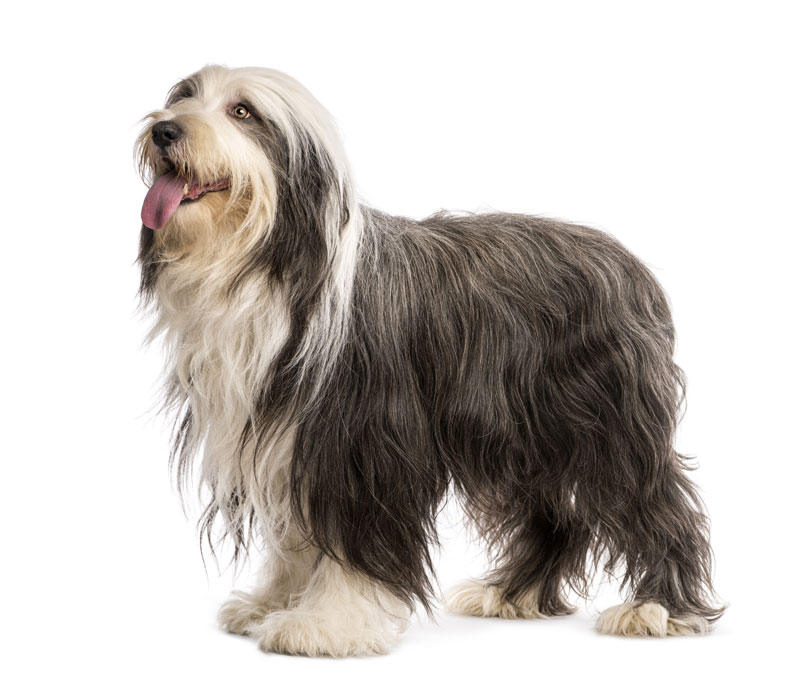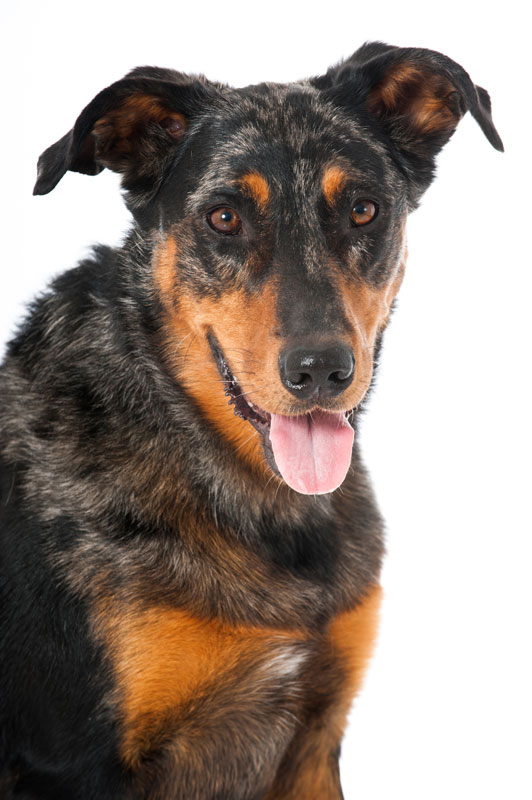Super User
Basque Shepherd Dog
The Basque Shepherd Dog is a dog breed of dog originating in the Basque Country (historical territory) and traditionally used by the local shepherds to help them take care of their cattle and sheep.
Pastor Vasco or Perro de Pastor Vasco is the Spanish name, and Euskal Artzain Txakurra, is the Basque, by which they are known in their homeland. It is believed that they originated from Central European shepherd dogs.
History
This Herding dog is one of the oldest dog breeds. Skeletal remains were found in Neolithic caves dated to 12,000 years ago. They are interpreted as demonstrating that the people living in the area of what is now Basque Country (greater region) were shepherds. In frescoes and paintings of the sixteenth century there are representations of the Basque Shepherd Dog. Nevertheless, their recognition has required extensive research on records from throughout the Basque Country. Only after demonstrating their differences from other breeds such as the Pyrenean Shepherd and the Catalan sheepdog, did the Royal Canine Society of Spain recognize the Basque Shepherd Dog as a breed with two varieties: Iletsua and Gorbeikoa, in January 1996.
Basset Artésien Normand
The Basset artésien normand (Norman Artesian Basset) is a short legged hound Dog type dog developed in France. The word Basset refers to short legged hounds.
History
Documenting of the French Basset as a purebred breed began in 1870, and from a common ancestral type, two strains were developed. One had straight front legs (Chien d'Artois) and the other had crooked front legs (Normand). The breed club was formed in 1910 and the breed was given its present name in 1924.Bassets are walking hounds, which are followed by the hunter on foot. The short legs mean that they would not get too far away from the hunter. The Basset artésien normand was used to hunt rabbits and other small game alone or in packs, but today they are primarily bred to be pets.
Basset Bleu de Gascogne
The Basset Bleu de Gascogne, also known as the Blue Gascony Basset, is a long-backed, short legged Dog breed of dog of the hound type. A breed with origins in the Middle Ages which descends from the Grand Bleu de Gascogne however it nearly went extinct around the early 19th century and its saviour was attributed to Alain Bourbon. A French native breed, it is rare outside of its homeland. It is recognized internationally by the Fédération Cynologique Internationale, in the UK by The Kennel Club, and by the United Kennel Club in the United States. The "bleu" of its name is a reference to its coat which has a ticked appearance.
Basset Fauve de Bretagne
The Basset Fauve de Bretagne is a short legged hunting dog breed of dog of the scent hound type originally from Brittany, a historical kingdom of France.
History
The breed was developed in France as a hunting dog from the larger Grand Fauve de Bretagne, a breed that is now extinct. There was a rumour that the Basset Fauve de Bretagne was also close to extinction after the Second World War, and the breed was recreated using the remaining examples of the breed and crossing in Petit Basset Griffon Vendéen and standard wirehaired Dachshunds. However, the French club denies this, and says that Basset Fauve numbers were never so low. The middle breed, the Griffon Fauve de Bretagne, still exists but it is certainly rarer than the Basset. The breed in the UK is mainly seen as a show dog and family pet, finally coming off the Kennel Club's rare breed register in 2007. It can also be found in other parts of Europe where it is used to scent trail and also as a family pet. They are loving, happy, outgoing dogs and are good with children, but it must be remembered that they are scent hounds and do retain their love of the hunt so may not suit every family. In the UK the breed has no hereditary faults; however, epilepsy has been identified in some breeding lines in France and other parts of Europe. Some Fauves are born with black in the coat; this may or may not go with maturity. It is less common to see them with white patches but when they do occur it is generally confined to the chest and top of the head. However, even though the black ticking and white patches are not accepted colours, of course it does not interfere with their hunting ability, which is their prime job, and so these colour Fauves are still seen and occur fairly often in litters. The correct colour for a Fauve is anything from fawn to red but it should be solid with darker shaded ears.
Health
There is apparently only one completed health survey of Basset Fauve de Bretagnes, a 2004 UK Kennel Club survey with a small sample size. The French Basset Fauve de Bretagne kennel club, Club du Fauve de Bretagne (http://fauvedebretagne.free.fr/ - in French), is currently (as of July 15, 2007) conducting a health survey, but the questionnaire asks owners about all of their dogs collectively (rather than each individual dog) and does not ask about longevity. The UK Club is planning a new, in depth health survey to be run late 2012 early 2013 in the hope that the longevity can be more accurately represented.
Mortality
Based on a small sample size of 15 deceased dogs, Basset Fauve de Bretagnes in the 2004 UK Kennel Club survey had a median longevity of 10.4 years (maximum 13.9 years), Most common causes of death were road traffic accidents, cancer, heart failure, and kidney failure. The high incidence of road traffic accidents may be perhaps blamed on this dog's love of the scent. Many pet Fauves go AWOL when they find a scent and this character trait is something an owner must never forget. Fauves can be trained very well in a controlled environment but training is rapidly forgotten once a fresh rabbit trail is found.
Morbidity
Among 84 live dogs in the 2004 UKC survey, the most common health issues noted by owners were reproductive, aural (otitis media and otitis externa), and ocular (corneal ulcers and cataracts).
Basset Hound
The Basset Hound is a short-legged dog breed of dog of the hound family, as well as one of six recognized Basset breeds in France; furthermore, Bassets are scent hounds that were originally bred for the purpose of hunting rabbits and hare. Their sense of smell for tracking is second only to that of the Bloodhound.
The name Basset is derived from the French word bas, meaning "low", with the attenuating suffix -et, together meaning "rather low". Basset Hounds are usually Coat_(dog)#Patterns or Coat_(dog)#Patterns of standard hound coloration.
Health
Ears
Basset Hounds have large pendulant ears (known as "leathers") that do not allow air to circulate inside them, like other breeds with erect or more open ears. This can result in Otitis media and ear mites if their ears are not kept clean and dry. If their ears are allowed to dangle on the ground or in food on a daily basis, they may develop chronic and potentially fatal ear diseases. Young puppies trip over their long ears and may bite their ears accidentally if they dangle in their food. This can lead to infection if they break the skin. Regular cleaning of the inside and outside of the ears, including the removal of excess ear wax, is necessary to prevent infections.
Short Stature
The Basset Hound's short stature is due to a genetic condition known as Osteochondrodysplasia (meaning abnormal growth of both bone and cartilage). Dwarfism of this type in most animals is traditionally known as Achondroplasia. Basset Hounds, Dachshunds and Bulldogs are a few of the dog breeds classified as Achondroplastic.Basset Hound puppies or very old dogs, should not be allowed to jump down from a height, due to how low they are to the ground. Because of a basset's body build (short stubby legs, low to the ground), if they fall too far, they can hurt their hips, injure their spine or break a leg. Many aging bassets have been euthanized due to such injuries. If a puppy sustains one of these injuries, the damage can be permanent.
Other
In addition to ear problems, basset hounds may be susceptible to eye issues. Because of their droopy eyes, the area under the eyeball will collect dirt and become clogged with a mucus. It is best to wipe their eyes every day with a damp cloth. This helps to lessen the build-up and prevent eye irritation.Bassets are bred for endurance. They need plenty of exercise and a good diet, free of grains and fillers to avoid potential food allergies and skin conditions. Being overweight leads to paralysis in Bassets.Basset Hounds are prone to yeast infections in the folds around the mouth, where drool can collect without thoroughly drying out. Wiping the area with a clean, dry towel and applying talcum powder can minimize this risk.The only recent mortality and morbidity surveys of Basset Hounds are from the UK: a 1999 longevity survey with a small sample size of 10 deceased dogs and a 2004 UK Kennel Club health survey with a larger sample size of 142 deceased dogs and 226 live dogs. See Mortality and Morbidity below.
Mortality
Median longevity of Basset Hounds in the UK is about 11.3 years, The oldest of the 142 deceased dogs in the 2004 UK Kennel Club survey was 16.7 years. Mummified remains of short-legged dogs from that period have been uncovered in the Dog Catacombs of Saqqara, Egypt. Scent Hounds were used for hunting in both Ancient Greece and Ancient Rome.
St Hubert's Hound
The basset type originated in France, and is descended from the 6th century hounds belonging to St Hubert of Belgium, which through breeding at the Benedictine Abbey of Saint-Hubert, Belgium eventually became what is known as the Bloodhound#Chien_de_St_Hubert around 1000AD. St Hubert's original hounds are descended from the Laconian (Spartas) Hound, one of four groups of dogs discerned from Greek representations and descriptions. These scent hounds were described as large, slow, 'short-legged and deep mouthed' dogs with a small head, straight nose, upright ears and long neck, and either tan with white markings or black with tan markings.
Laconian Hounds were reputed to not give up the scent until they found their prey. They eventually found their way to Constantinople, and from there to Europe. and for this reason short-legged dogs were highly valued for hunting on foot.Basset type hounds achieved noticeable public cultural popularity during the reign of Emperor Napoleon III (r. 1852-1870). In 1853, Emmanuel Fremiet, "the leading sculptor of animals in his day" exhibited bronze sculptures of Emperor Napoleon III's basset hounds at the Paris Salon. Ten years later in 1863 at the first exhibition of dogs held in Paris, basset hounds attained international attention.The controlled breeding of the short haired basset began in France in the year 1870. From the existing Bassets, Count Le Couteulx of Canteleu fixed a utilitarian type with straight front legs known as the Chien d'Artois, whereas Mr. Louis Lane developed a more spectacular type, with crooked front legs, known as the Basset Normand. These were bred together to create the original Basset Artésien Normand.
England
French bassets were being imported into England at least as early as the 1870s. While some of these dogs were certainly Basset Artésien Normands, by the 1880s linebreeding had thrown back to a different heavier type. Everett Millais', who is considered to be the father of the modern Basset Hound, bred one such dog, Nicholas, to a Bloodhound bitch named Inoculation through artificial insemination in order to create a heavier basset in England in the 1890s. The litter was delivered by caesarean section, and the surviving pups were refined with French and English bassets. The first breed standard for what is now known as the Basset Hound was made in Great Britain at the end of 19th century. This standard was updated in 2010.
Bavarian Mountain Hound
The Bavarian Mountain Hound (German = "Bayerischer Gebirgsschweißhund") is a Dog breed from Germany. It is a scent hound and has been used in Germany since the Middle Ages to trail wounded game. It is a cross between the Bavarian Hound and the Hanover Hound.
History
The Bavarian Mountain Dog specialises in tracking injured Game (food) following the traces of blood the prey loses after being shot. This hunting discipline comes from the Middle Ages. The weapons used then were imprecise and the animals were frequently wounded and not killed so the dogs were necessary to track them. Gaston Phébus wrote in 1387:
:“It is a great amusement and a really nice hunt when you have a tracking dog and a good dog for the blood…”
The Germans were really meticulous in order not to lose any prey and developed a technique for which they bred resistant dogs with a great sense of smell, a strong bone structure, dropping ears and a steady temperament. These dogs were medium sized and reliable.
The Bavarian Mountain Dog was developed in the 19th century by crossbreeding specimens of the Hannoversche Schweißhund breed and hunting dogs from the Montes Alpes. The result was a hunting dog ideal for the work in the mountains. In 1912, the "Klub für Bayrische Gebirgsschweißhunde", (Club for Bavarian Mountain hound), was founded in Munich. Afterwards, this breed started gaining popularity in Austria and Hungary.
Beagle
The Beagle is a dog breed of small to medium-sized dog. A member of the hound group, it is similar in appearance to the foxhound, but smaller with shorter legs and longer, softer ears. Beagles are scent hounds, developed primarily for Tracking (hunting) hare, rabbit,deer, and other small Game (food). They have a great sense of smell and tracking instinct that sees them employed as detection dogs for prohibited agricultural imports and foodstuffs in quarantine around the world. Beagles are intelligent but single-minded, and popular pets because of their size, even temper, and lack of Dog health#Genetic diseases.Although beagle-type dogs have existed for over 2,000 years, the modern breed was developed in Great Britain around the 1830s from several breeds, including the Talbot, the North Country Beagle, the, and possibly the Harrier.Beagles have been depicted in popular culture since Elizabethan era times in literature and paintings, and more recently in film, television and comic books. Snoopy of the comic strip Peanuts has been promoted as "the world's most famous beagle".
History
Early beagle-type dogs
Dogs of similar size and purpose to the modern Beagle can be traced in Ancient Greece
back to around the 5th century BC. Xenophon, born around 430 BC, in his Treatise on Hunting or Cynegeticus refers to a hound that hunted hares by scent and was followed on foot. Small hounds are mentioned in the Forest Laws of Canute the Great which exempted them from the ordinance which commanded that all dogs capable of running down a Deer should have one foot mutilated. If genuine, these laws would confirm that beagle-type dogs were present in England before 1016, but it is likely the laws were written in the Middle Ages to give a sense of antiquity and tradition to Forest Law. In the 11th century, William I of England brought the Talbot to Britain. The Talbot was a predominantly white, slow, deep-throated, scent hound derived from the St. Hubert Hound which had been developed in the 8th century. At some point the English Talbots were crossed with Greyhounds to give them an extra turn of speed. Long extinct, the Talbot strain probably gave rise to the Southern Hound which, in turn, is thought to be an ancestor of the modern day Beagle.From medieval times, beagle was used as a generic description for the smaller hounds, though these dogs differed considerably from the modern breed. Miniature breeds of beagle-type dogs were known from the times of Edward II of England and Henry VII of England, who both had packs of Glove Beagles, so named since they were small enough to fit on a glove, and Elizabeth I of England kept a breed known as a Pocket Beagle, which stood 20.3cm - 22.9cm at the shoulder. Small enough to fit in a "pocket" or saddlebag, they rode along on the hunt. The larger hounds would run the prey to ground, then the hunters would release the small dogs to continue the chase through underbrush. Elizabeth I referred to the dogs as her singing beagles and often entertained guests at her royal table by letting her Pocket Beagles cavort amid their plates and cups. 19th-century sources refer to these breeds interchangeably and it is possible that the two names refer to the same small variety. In George Jesse's Researches into the History of the British Dog from 1866, the early 17th-century poet and writer Gervase Markham is quoted referring to the Beagle as small enough to sit on a man's hand and to the:
Standards for the Pocket Beagle were drawn up as late as 1901; these genetic lines are now extinct, although modern breeders have attempted to recreate the variety.
Eighteenth century
By the 18th century two breeds had been developed for hunting hare and rabbit: the and the North Country Beagle (or Northern Hound). The Southern Hound, a tall, heavy dog with a square head, and long, soft ears, was common from south of the River Trent and probably closely related to the Talbot. Though slow, it had stamina and an excellent scenting ability. The North Country Beagle, possibly a cross between an offshoot of the Talbot stock and a Greyhound, was bred chiefly in Yorkshire and was common in the northern counties. It was smaller than the Southern Hound, less heavy-set and with a more pointed muzzle. It was faster than its southern counterpart but its scenting abilities were less well developed. As fox hunting became increasingly popular, numbers of both types of hound diminished. The beagle-type dogs were crossed with larger breeds such as Stag Hounds to produce the modern English Foxhound. The beagle-size varieties came close to extinction but some farmers in the South ensured the survival of the prototype breeds by maintaining small rabbit-hunting packs.
Development of the modern breed
Reverend Phillip Honeywood established a Beagle pack in Essex in the 1830s and it is believed that this pack formed the basis for the modern Beagle breed.
Although details of the pack's lineage are not recorded it is thought that North Country Beagles and Southern Hounds were strongly represented; William Youatt suspected that Harrier formed a good majority of the Beagle's bloodline, but the origin of the Harrier is itself obscure. Honeywood's Beagles were small, standing at about 25.4cm at the shoulder, and pure white according to John Mills (writing in The Sportsman's Library in 1845). Albert, Prince Consort and Edward Turnour, 4th Earl Winterton also had Beagle packs around this time, and royal favour no doubt led to some revival of interest in the breed, but Honeywood's pack was regarded as the finest of the three.Although credited with the development of the modern breed, Honeywood concentrated on producing dogs for hunting and it was left to Thomas Johnson to refine the breeding to produce dogs that were both attractive and capable hunters. Two strains were developed: the rough- and smooth-coated varieties. The rough-coated Beagle survived until the beginning of the 20th century, and there were even records of one making an appearance at a dog show as late as 1969, but this variety is now extinct, having probably been absorbed into the standard Beagle bloodline.In the 1840s, a standard Beagle type was beginning to develop; the distinction between the North Country Beagle and Southern Hound had been lost, but there was still a large variation in size, character, and reliability among the emerging packs. In 1856, "Stonehenge" (the pseudonym of John Henry Walsh), writing in the Manual of British Rural Sports, was still dividing Beagles into four varieties: the medium Beagle; the dwarf or lapdog Beagle; the fox Beagle (a smaller, slower version of the Foxhound); and the rough-coated or terrier Beagle, which he classified as a cross between any of the other varieties and one of the Scottish terrier breeds. Stonehenge also gives the start of a standard description:By 1887 the threat of extinction was on the wane: there were 18 Beagle packs in England. The Beagle Club was formed in 1890 and the first standard drawn up at the same time. The following year the Association of Masters of Harriers and Beagles was formed. Both organisations aimed to further the best interests of the breed, and both were keen to produce a standard type of Beagle. By 1902, the number of packs had risen to 44. The Beagle was accepted as a breed by the American Kennel Club (AKC) in 1885. In the 20th century the breed has spread worldwide.
Popularity
On its formation, the Association of Masters of Harriers and Beagles took over the running of a regular show at Peterborough that had started in 1889, and the Beagle Club in the UK held its first show in 1896.As purebred dogs, Beagles have always been more popular in the United States and Canada than in their native country England. The National Beagle Club of America was formed in 1888 and by 1901 a Beagle had won a Best in Show title. As in the UK, activity during World War I was minimal, but the breed showed a much stronger revival in the U.S. when hostilities ceased. In 1928 it won a number of prizes at the Westminster Kennel Club's show and by 1939 a Beagle – Champion Meadowlark Draughtsman – had captured the title of top-winning American-bred dog for the year. On 12 February 2008, a Beagle, K-Run's Park Me In First, won the Best In Show category at the Westminster Kennel Club show for the first time in the competition's history. In North America they have been consistently in the top-ten most-popular breeds for over 30 years. From 1953 to 1959 the Beagle was ranked No. 1 on the list of the American Kennel Club's registered breeds; in 2005 and 2006 it ranked 5th out of the 155 breeds registered. In the UK they are not quite so popular, placing 28th and 30th in the rankings of registrations with the Kennel Club in 2005 and 2006 respectively. In the United States the Beagle ranked 4th most popular breed in 2012 and 2013, behind the Labrador Retriever (#1), German Shepherd (#2) and Golden Retriever (#3) breeds.
Name
According to the Oxford English Dictionary, the first mention of the beagle by name in English literature dates from ca. 1475 in the Esquire of Low Degree. The origin of the word "beagle" is uncertain, although it has been suggested that the word derives from the French begueule (meaning "open throat" from bayer "open wide" and gueule "mouth") or from an Old English language, French or the Goidelic languages word beag, meaning "little." Other possibilities include the French beugler (meaning "to bellow") and the German begele (meaning "to scold").It is not known why the black and tan Kerry Beagle, present in Ireland since Celtic times, has the beagle description, since at 55.9cm - 61cm it is significantly taller than the modern day Beagle, and in earlier times was even larger. Some writers suggest that the Beagle's scenting ability may have come from cross-breeding earlier strains with the Kerry Beagle. Originally used for hunting stags, it is today used for hare and drag hunting.
Health
The typical longevity of Beagles is 12–15 years, which is a common lifespan for dogs of their size.Beagles may be prone to epilepsy, but this can often be controlled with medication. Hypothyroidism and a number of types of dwarfism occur in Beagles. Two conditions in particular are unique to the breed: "Funny Puppy", in which the puppy is slow to develop and eventually develops weak legs, a crooked back and although normally healthy, is prone to a range of illnesses; Hip dysplasia (canine), common in Harriers and in some larger breeds, is rarely considered a problem in Beagles. Beagles are considered a chondrodystrophy breed, meaning that they are prone to types of disk diseases.In rare cases, Beagles may develop immune mediated polygenic arthritis (where the immune system attacks the joints) even at a young age. The symptoms can sometimes be relieved by Corticosteroid#Uses treatments.Beagles may exhibit a behaviour known as reverse sneezing, in which they sound as if they are choking or gasping for breath, but are actually drawing air in through the mouth and nose. The exact cause of this behaviour is not known, but it is not harmful to the dog.
In popular culture
Beagles have been featured across a wide range of media. References to the dog appear before the 19th century in works by such writers as William Shakespeare, John Webster, John Dryden, Thomas Tickell, Henry Fielding and William Cowper, and in Alexander Pope's translation of Homer's Iliad. Beagles appeared in funny animal comic strips and animated cartoons from the 1950s with the Peanuts character Snoopy, billed as "the world's most famous Beagle",c. The Harts posed the following question to a panel of 96 experts, half of which were veterinary surgeons and the other half dog obedience trial judges:d. The specific references in each of the author's works are as follows:Shakespeare: "Sir Toby Belch: She's a beagle, true-bred, and one that adores me: what o' that?" Twelfth Night (c.1600) Act II Scene III Webster: "Mistress Tenterhook: You are a sweet beagle" Westward Ho (play) (1607) Act III Scene IV:2Dryden: "The rest in shape a beagle's whelp throughout, With broader forehead and a sharper snout" The Cock and the Fox, and again: "About her feet were little beagles seen" in Palamon and Arcite both from Fables, Ancient and Modern (1700)Tickell: "Here let me trace beneath the purpled morn, The deep-mouth'd beagle, and the sprightly horn" To a Lady before Marriage (published posthumously in 1749)Fielding: "'What the devil would you have me do?' cries the Squire, turning to Blifil, 'I can no more turn her, than a beagle can turn an old hare.'" The History of Tom Jones, a Foundling (1749) Chapter 7.Cowper: "For persevering chase and headlong leaps, True beagle as the staunchest hound he keeps" The Progress of Error (1782)Pope: "Thus on a roe the well-breath'd beagle flies, And rends his hide fresh-bleeding with the dart" The Iliad of Homer (1715–20) Book XV:697–8
Beagle-Harrier
The Beagle Harrier is a scenthound. It is a dog breed of dog originating from France.
History
Beagle Harriers were bred in France in the 19th century by François Gérard. The Beagle Harrier could be a mixture of the two breeds, the Beagle and the Harrier or the midpoint in breeding between the two breeds.
It was recognized by the Fédération Cynologique Internationale in 1974. The Beagle-Harrier is also recognised by the Continental Kennel Club in their Hound group.The Beagle Harrier can now be quite rarely found in France and are even more rare in other countries.
Health
The Beagle Harrier is generally very healthy and has a life span of 12 to 13 years. Hip dysplasia (canine) could cause a problem.
Bearded Collie
The Bearded Collie or Beardie, is a herding dog dog breed of dog once used primarily by Scotland shepherds, but now mostly a popular family companion.Bearded Collies have an average weight of 18.1kg - 27.2kg. Males are around 53.3cm - 55.9cm tall at the withers while females are around 50.8cm - 53.3cm tall.
History
The Bearded Collie's history is a mix of fact and legend. Kazimierz Grabski, a Polish merchant, reportedly traded a shipment of grain for sheep in Scotland in 1514 and brought six Polish Lowland Sheepdogs to move them. A Scottish shepherd was so impressed with the herding ability of the dogs that he traded several sheep for several dogs. The Polish sheepdogs were bred with local Scottish dogs to produce the Bearded Collie.It is generally agreed that Mrs. G. Olive Willison founded the modern Bearded Collie in 1944 with her brown bitch, Jeannie of Bothkennar. Jeannie was supposedly a Shetland Sheepdog, but Mrs. Willison received a Bearded Collie by accident. She was so fascinated by the dog that she wanted to begin breeding, so she began searching for a dog for Jeannie. While walking along the beach, Mrs. Willison met a man who was emigrating from Scotland; she became the owner of his grey dog, David, who became Bailie of Bothkennar.Bailie and Jeannie of Bothkennar are the founders of the modern breed; there are only a few other registrable blood lines, preserved in large part by the perseverance of Mr. Nicolas Broadbridge (Sallen) and Mrs. Betty Foster (Bredon). These are based on Turnbull's Blue—a Bearded Collie from pure working stock, registered in when ISDS still registered non-Border Collies. He sired three litters of registerable Bearded Collies.The breed became popular during the last half of the 20th century—propelled, in part, by Potterdale Classic at Moonhill, a Bearded Collie who won Best in Show at Crufts in 1989. The Bearded Collie Club celebrated its Golden Jubilee in 2005.The bearded collie is also very good natured and is good as a family pet and a working dog and a show dog.
Health
The size of an average litter is seven pups.
Mortality
The median longevity (the age at which half of the population has died and half is still alive) of Bearded Collies from recent UK and USA/Canada surveys (the weighted average of all surveys) is 12.8 years; Beardies in the UK surveys lived longer (median ~13.4 years) than their USA/Canada counterparts (median 12.0 years). Most purebred breeds have median longevities between 10 and 13 years and most breeds similar in size to Bearded Collies have median longevities between 11 and 13 years, so the lifespan of Bearded Collies appears to be on the high end compared with other breeds (at least in the UK). Individual dogs may die much earlier or later than the median. In a 1996 USA/Canada survey, 32% of Beardies died (including accidental deaths) before the age of nine; however, 12% lived longer than 14 years. The eldest of the 278 deceased dogs in the 2004 UK Kennel Club survey died at 19.5 years; the age at death of the oldest dog in the USA/Canada survey was not reported.Leading causes of death among Beardies in the UK are old age (26%), cancer (19%), cerebrovascular disease (9%), and chronic kidney failure (8%). Leading causes of death among Beardies in the US and Canada are old age (18%), cancer (17%), kidney failure (8%), cerebrovascular disease(4%) and Addison's disease in canines (4%).
Morbidity
Bearded Collie owners in the UK reported that the most common health issues among living dogs were musculoskeletal—mostly arthritis and cruciate ligament rupture (CLR)—gastrointestinal (primarily colitis and diarrhea) and urologic diseases. Beardie owners in the US and Canada reported that the most common health problems were hypothyroidism, cancer, Addison's disease, arthritis and skin problems. Morbidity in the two studies is not easily compared, however; the UK report grouped diseases, while the USA/Canada report ranked more specific conditions.
Addison's Disease
Beardie owners should be aware of the frequency of Addison's disease (insufficient production of glucocorticoids and/or mineralocorticoids in the adrenal cortex) in this breed. It occurs in at least 2%-3.4% of Beardies in the USA/Canada survey, and is the cause of death in at least 1% of Beardies in the UK survey. Although these numbers seem low compared with those of other health issues, the percentages are much higher than for the general dog population (0.1%) and Addison's is responsible for a disproportionate number of deaths among young dogs. Addison's is often undiagnosed, since early symptoms are vague and easily mistaken for other conditions. Bearded Collies with unexplained lethargy, frequent gastric disturbances or an inability to tolerate stress should be tested for Addison's. Addison's can cause fatal sodium/potassium imbalances but, if caught early and treated with lifelong medication, most dogs can live a relatively normal life.
Beauceron
The Beauceron is a guard dog and herding dog dog breed falling into the working dog category whose origins lie in the plains of Northern France. The Beauceron is also known as Berger de Beauce (sheepdog from Beauce) or Bas Rouge (red-stockings).
History
A French herding breed known for centuries in western Europe, the Beauceron is noted as one of the breeds used to create the Doberman Pinscher.The regional name is somewhat misleading. The breed was found throughout northern France, rather than just in the Beauce region. Although quite different in appearance, the Beauceron and the long-haired sheep dog, the Briard, stem from similar ancestral stock, sharing the trait of double dewclaws on the hind legs. Both were used to herd sheep and cattle. Like the Beauceron, the Briard is found throughout northern France, and despite implications from its name, also did not come exclusively from the Brie region. In 1809, Abbé Rozier wrote an article on these French herding dogs, in which he described the differences in type and used the terms Berger de Brie and Berger de Beauce.In 1893, the veterinarian Paul Megnin differentiated between the long-haired Berger de la Brie and the short-haired Berger de Beauce. He defined the standard of the breed, with the assistance of M. Emmanuel Ball. In 1922, the Club des Amis du Beauceron was formed under the guidance of Dr. Megnin.In 2008, the Beauceron made its debut in the Westminster Kennel Club Dog Show.
History as a working breed
A very versatile breed, the Bas Rouge is used to both guard and herd sheep and cattle. It was once very useful against wolf, now long gone from northern France. The breed served in both world wars as messenger dog, supply transport dog, land mine detection dog, search dog, police dog and rescue dog.

